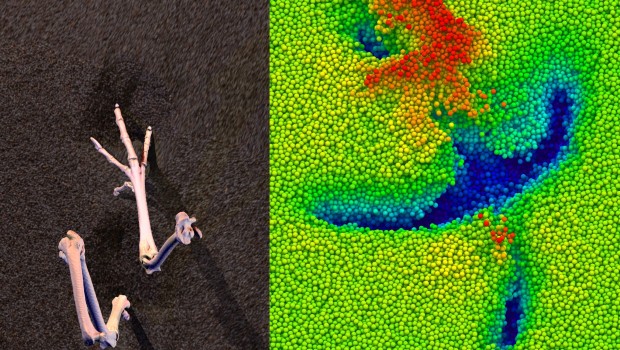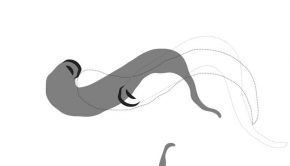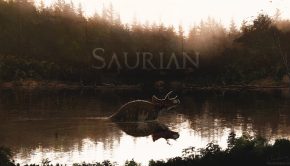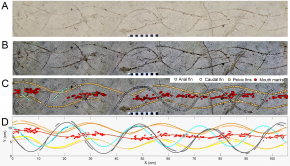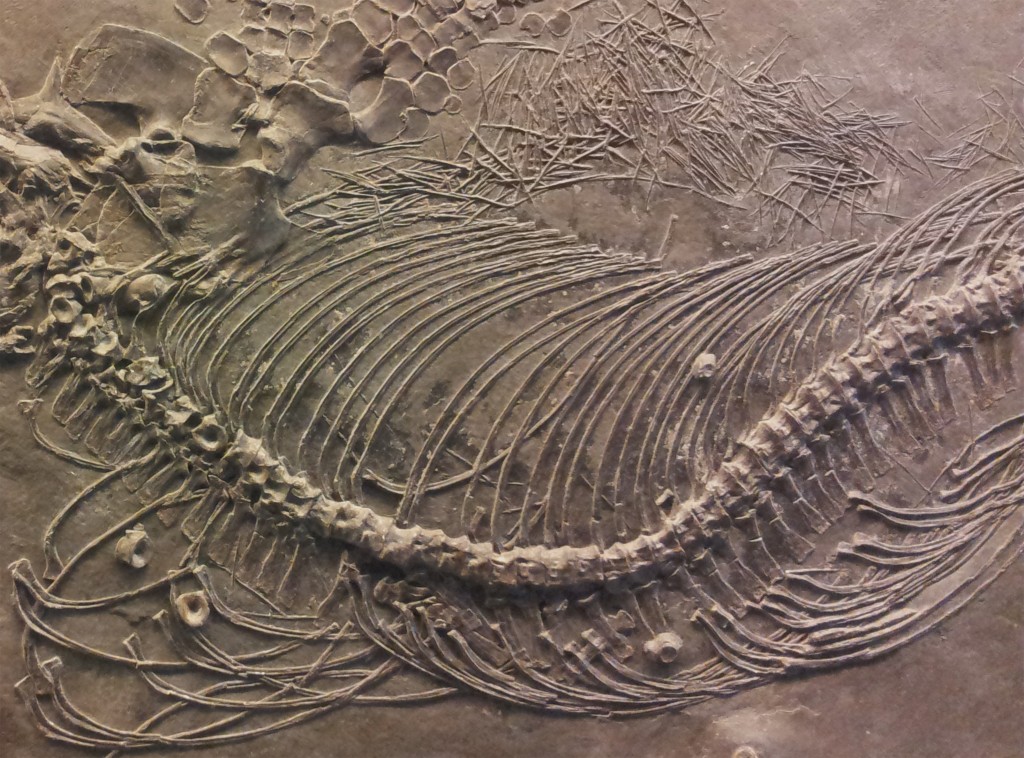Episode 44: Trackway modelling
We’ve covered ichnology before, in Episode 14, but it’s time to revisit trackways with a high-tech approach. We talk to ichnologist and computer expert Dr Peter Falkingham, from Liverpool John Moores University, who’s been looking at footprints using state-of-the-art techniques.
Podcast: Download (Duration: 41:59 — 57.7MB)
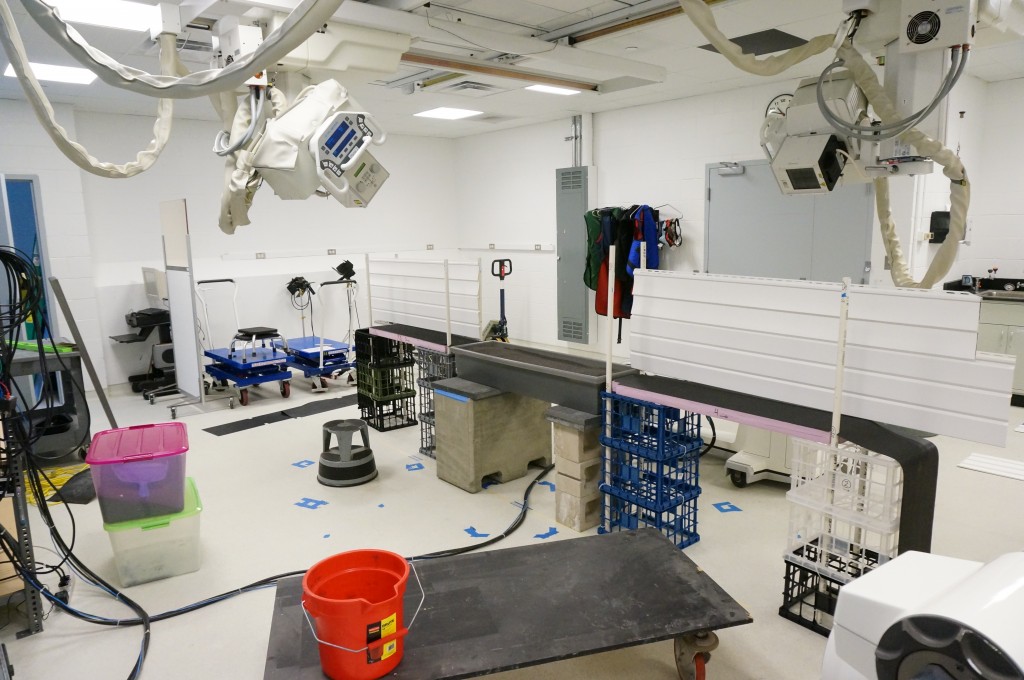
The W. M. Keck facility at Brown University, USA, where the guineafowl ran across a sediment trough between two X-rays. (see www.xromm.org).

The reconstructed XROMM data of the guienafowl skeleton (hindlimbs + pelvis) traversing the sediment (captured using photogrammetry). The Light camera and X-ray images are positioned in virtual world-space as the cameras were in reality.
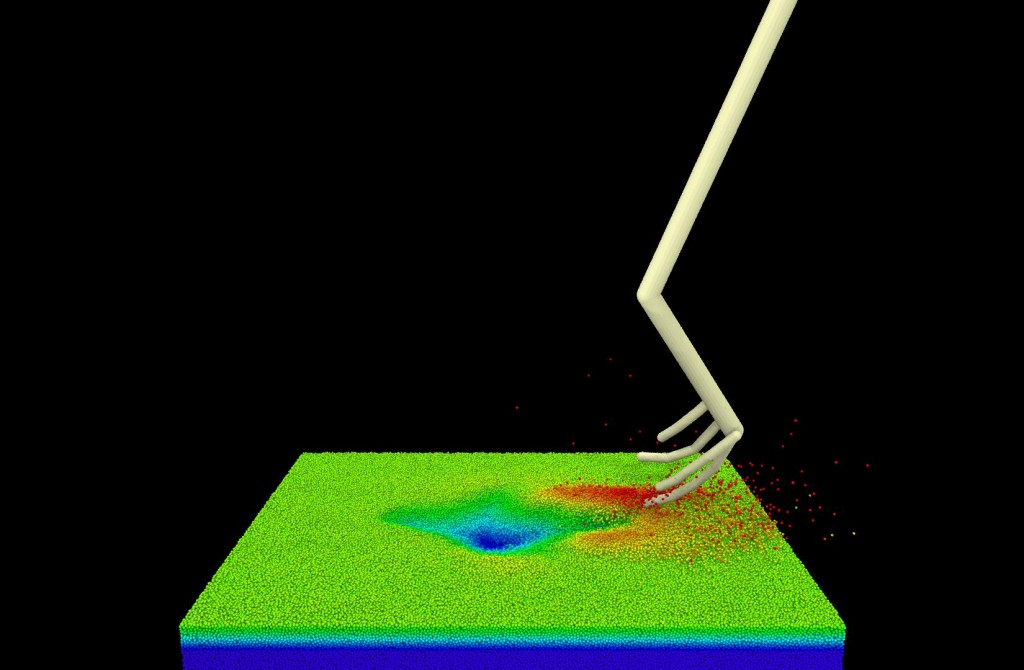
The final simulated track and foot, simulated using the discrete element method (see www.liggghts.com).

Left, the XROMM data showing the match between the guineafowl’s motion and the final track. Right, a simulated track created using the real motions, but exposed a couple of centimetres below the original surface. Notice how the track has a very different shape to the one at the surface (shown left). Study article: Falkingham and Gatesy 2014.
On the left, we can see high speed (250 fps) video captured with X-ray and light cameras of a guineafowl walking in poppy seeds. The bones have been rotoscoped in three dimensions and overlain on the videos.
The right of the image shows particle simulations produced by using the real foot motion. These simulations enable us to visualize how footprints are formed at and below the sediment surface. These simulations can be used to help interpret and understand fossil dinosaur tracks.
This animation displays the results of using X-ray reconstruction of moving morphology (XROMM) to view the sub-surface movements of a guineafowl foot as the bird traverses a soft substrate. The bird is show slowed down by 10x. By using bi-planar X-rays, combined with two high speed light cameras, models of the bones (acquired using CT) can be placed in 3D space. For the first time this enables us to see how the foot moves beneath the surface of the sediment. Additionally, a photogrammetric model was produced of the resultant track surface, and this has been positioned accurately within the scene allowing a direct correlation between the surface track and the foot motions. This work has immense utility for understanding how fossil tracks are formed, and is being used to reverse-engineer deep, penetrative dinosaur tracks in order to reconstruct foot and limb motions of extinct animals.
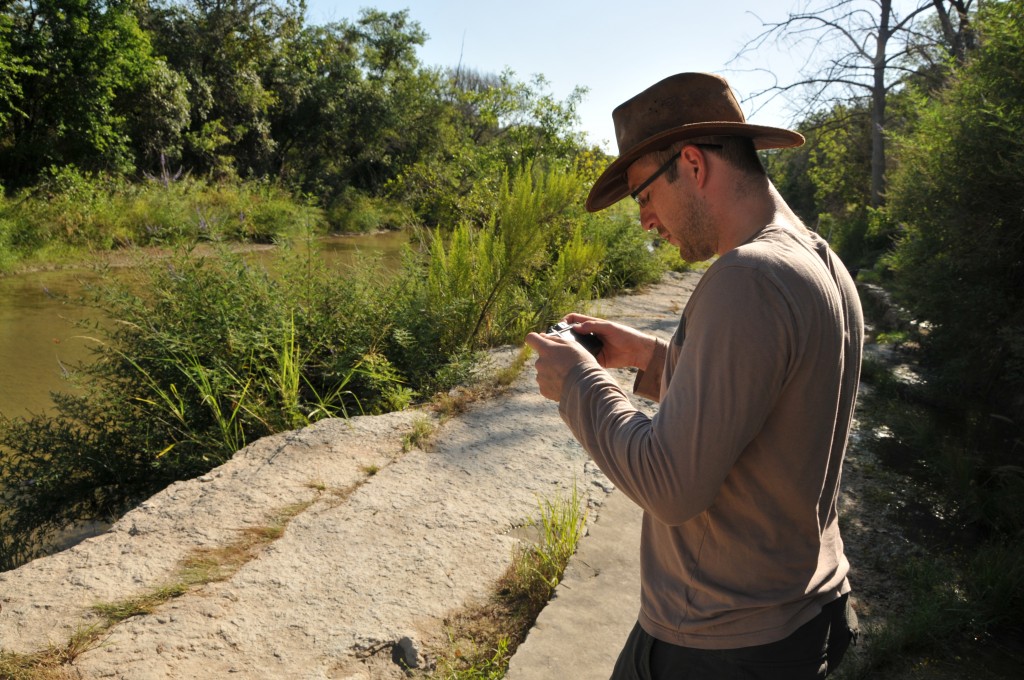
Dr Peter Falkingham taking photos in the field to produce photogrammetric reconstructions of dinosaur trackways. The Paluxy chase sequence was reconstructed using the same technique. Study article: Falkingham et al. 2014.

